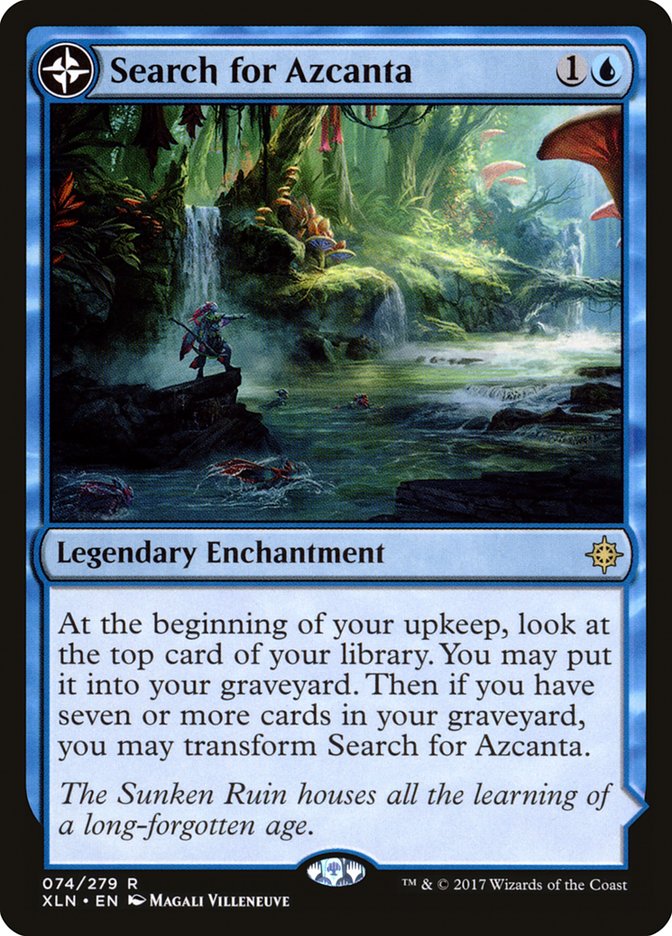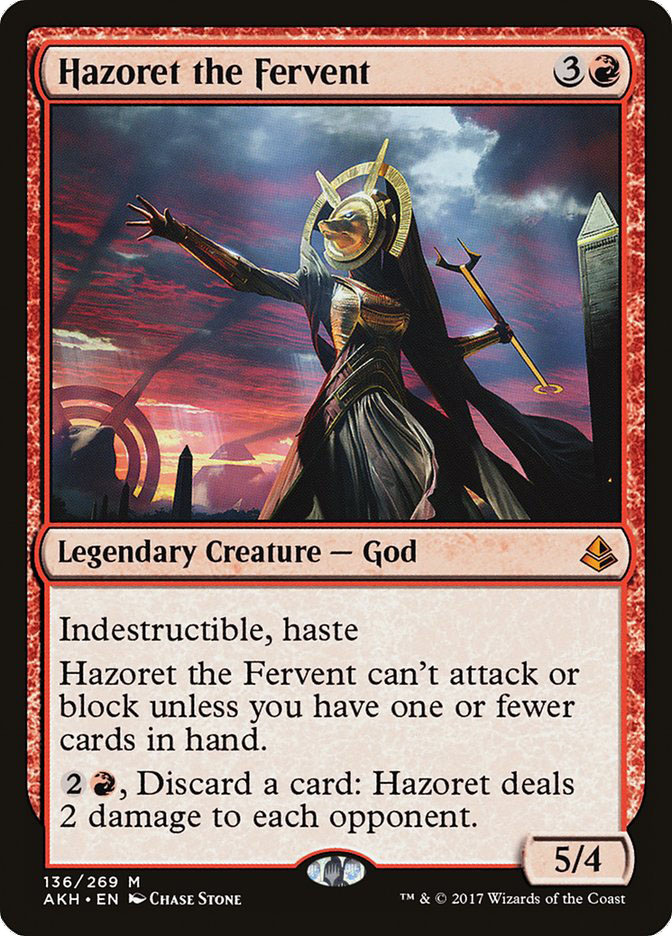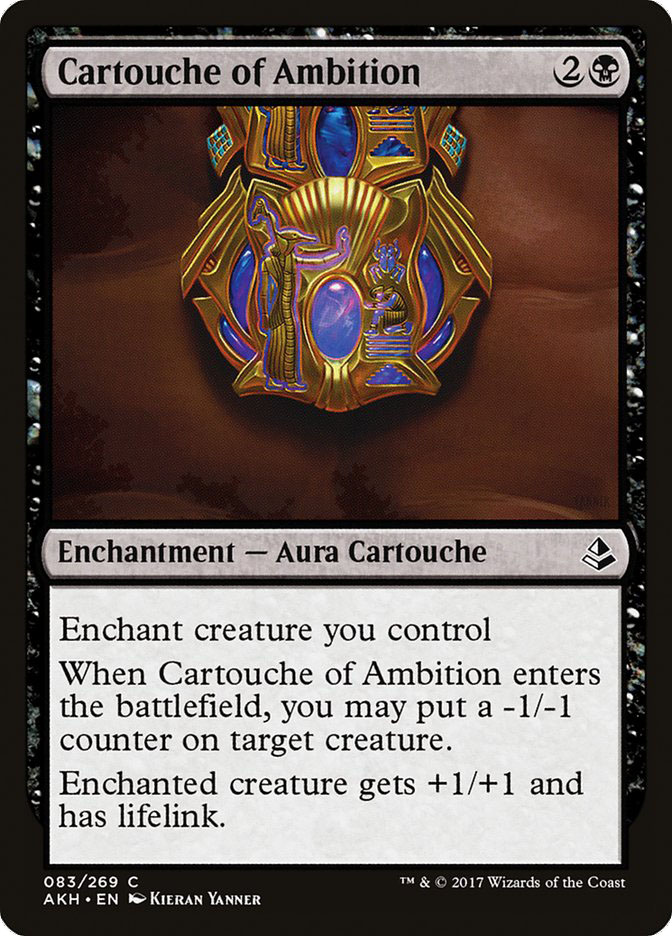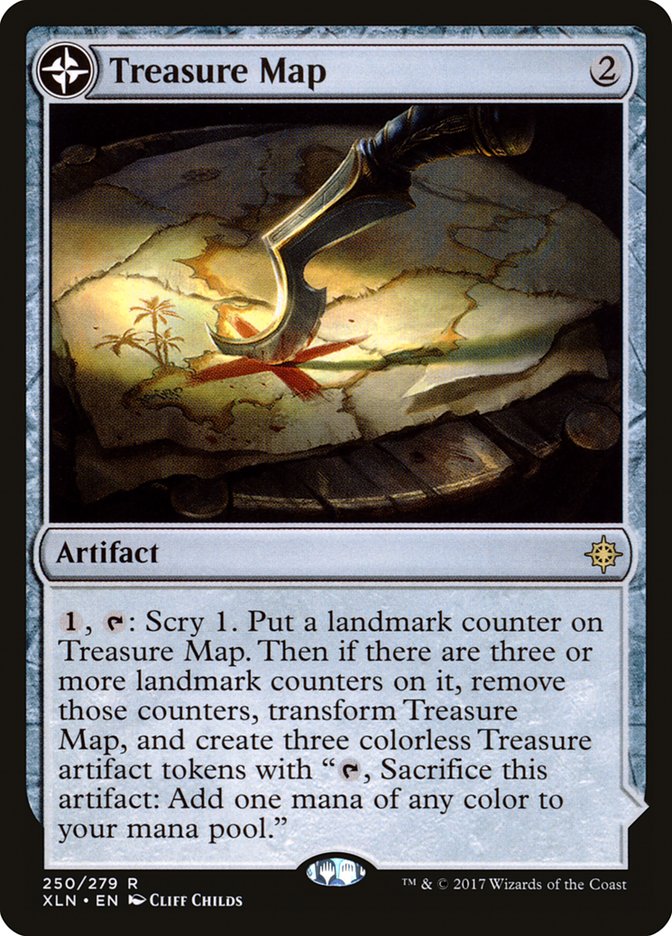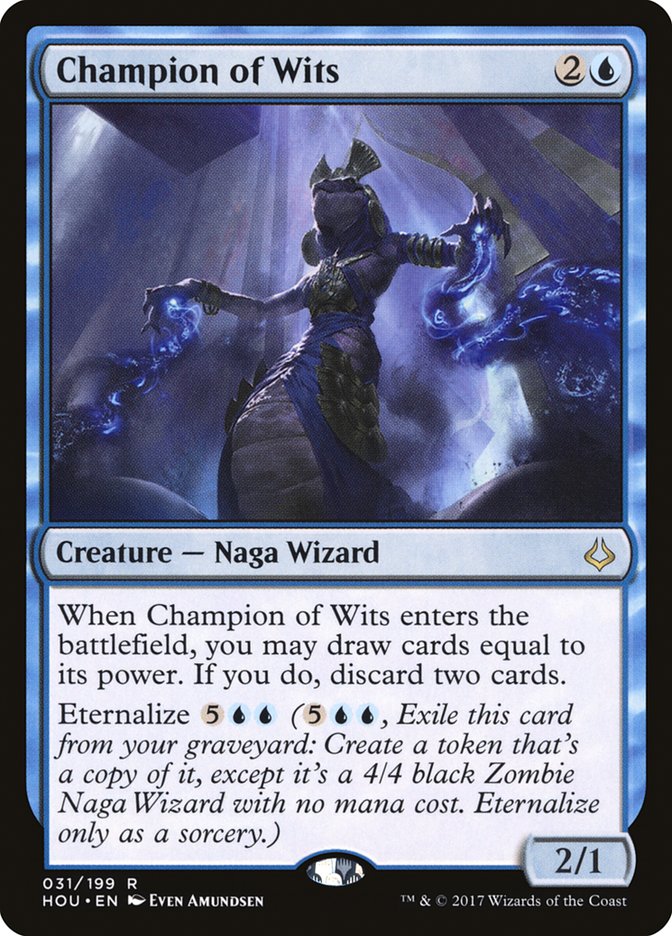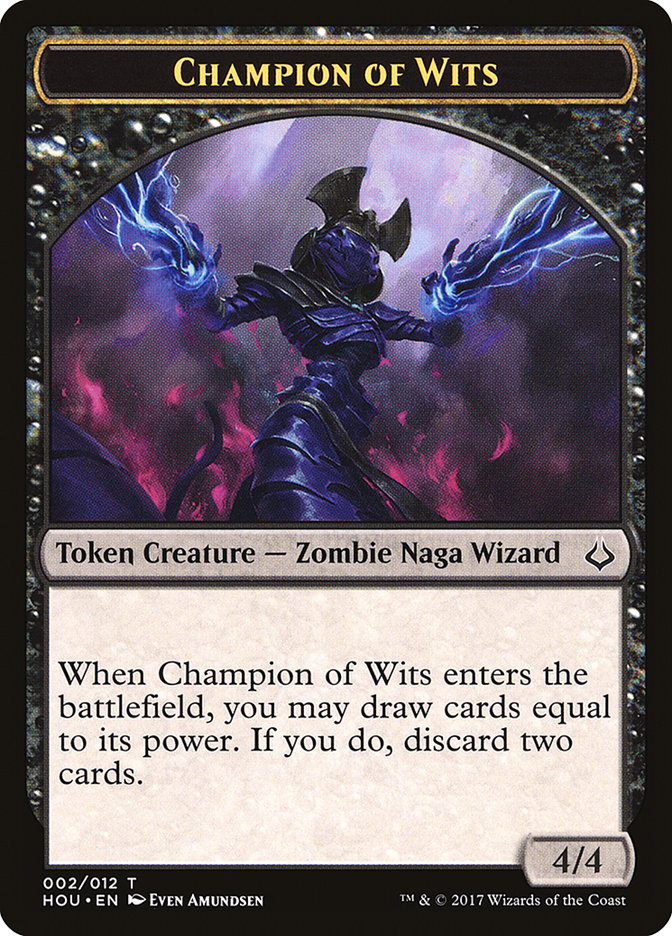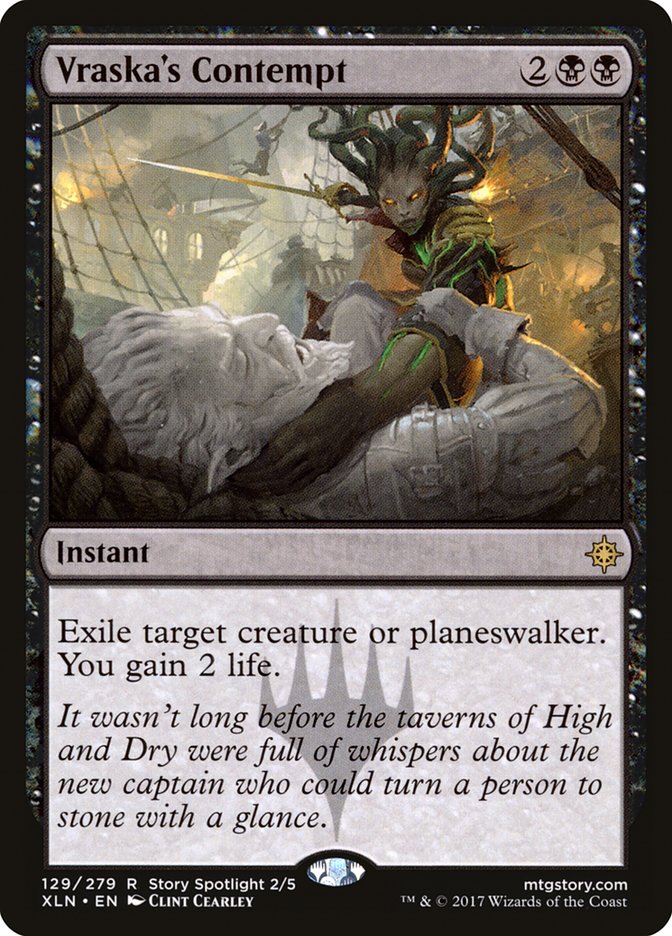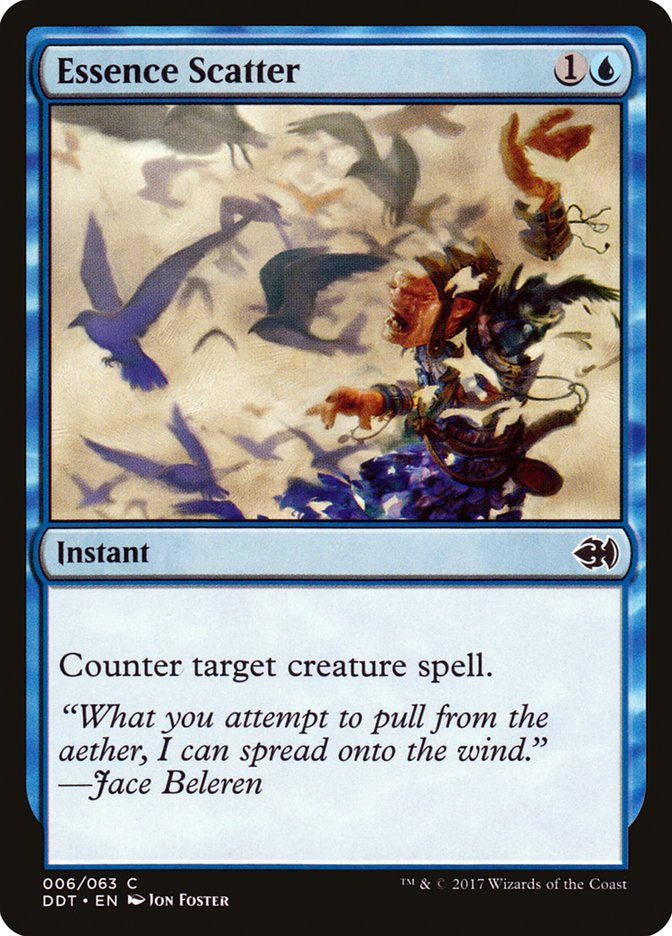Hello!
For those of you who don’t know me – and that’s most of you – I’m Ben Ragan and I’m a relatively new face on the SCG Tour. This past weekend at SCG Philadelphia, I went 9-0 on Day 1 of the Team Constructed Open and made Top 8 of the Standard Classic with my unique take on U/B Midrange in Standard.
Last season, my teammate Nico Devalle and I had a huge amount of success on Magic Online and at SCG Tour events playing Four-Color Energy. After Attune with Aether and Rogue Refiner were banned, I knew I still wanted to be playing the best deck with The Scarab God. And fortunately, I think I’ve found it:
Creatures (19)
- 2 Torrential Gearhulk
- 4 Glint-Sleeve Siphoner
- 4 Gifted Aetherborn
- 3 The Scarab God
- 4 Champion of Wits
- 1 Hostage Taker
- 1 Ravenous Chupacabra
Lands (22)
Spells (19)
Sideboard

To start things off, let’s talk about the three pillars of Standard:
Seven of the decks in the Top 8 of the SCG Philadelphia Team Constructed Open contained at least one of these cards. Each of these three cards provides almost assured inevitability. If one of these is not immediately removed before you or your opponent begins to gain an advantage from it, the game snowballs out of control.
The real problem with these cards, however, is how little investment and risk is required to take over the game. It’s extremely difficult to kill any one of Search for Azcanta, Hazoret the Fervent, or The Scarab God and come out ahead on either mana or time. For example, if I use my Cast Out to kill my opponent’s Hazoret, we have at the minimum traded evenly on resources. When you activate The Scarab God’s ability, you get what basically amounts to a three-for-one, since you often eternalize a creature with an effect when it enters the battlefield.
When playing Search for Azcanta, a player can trade one-for-one with their opponent before drawing so many cards that they overwhelm almost any deck. An even trade of resources is the absolute worst-case scenario for any of these cards, and your opponent has to hold up mana or spend basically their entire turn answering them.
I firmly believe it is a mistake to go any competitive Standard event and not have at least one of Search for Azcanta, Hazoret the Fervent, or The Scarab God registered in your 75.
Why Not Grixis Energy?
I was asked this question multiple times throughout SCG Philadelphia. Fortunately the answer can be summed up in one word: Mana.
Let’s start by taking a look at Brennan DeCandio’s finals decklist from last weekend:
Creatures (18)
- 1 Torrential Gearhulk
- 4 Whirler Virtuoso
- 4 Glint-Sleeve Siphoner
- 3 Glorybringer
- 2 The Scarab God
- 4 Rekindling Phoenix
Planeswalkers (2)
Lands (25)
Spells (15)

After Turn 3, the deck has nine lands that enter the battlefield tapped, but it is built to cast five-drops on Turn 5 as well as get to a point where it can pull ahead of its opponents by casting two spells in one turn. I believe this is the glaring weakness of all Grixis decks in Standard. Hitting land drops is imperative, and having them be untapped is necessary to play its powerful spells on-curve. Even then, more untapped lands are always welcome because they enable mana sinks like The Scarab God and Chandra, Torch of Defiance, but the lands available in the Grixis colors don’t allow this. When testing with various Grixis decks, I consistently drew hands that looked like this:
With this hand, I’m forced to commit to a plan where I either cast my two-drop and risk wasting my third and fourth turn or throw away my second turn to give myself a better shot at hitting untapped lands on four and five. No matter my choice, it’s highly likely that I wouldn’t be playing all my spells on curve.
Too many times when playing Grixis, I needed to hit my fifth land drop to cast Glorybringer and stabilize, only to draw a land that would enter the battlefield tapped. Too many times I had to choose whether or not I wanted to cast my early removal or spend my time developing my mana so I could cast my four- and five-drops on-curve. This led me to consider a two-color midrange deck. U/R doesn’t have a good answer to any of the aforementioned pillars of the format other than counterspells, while a B/R midrange deck doesn’t get to play the pillars of Standard. But U/B had everything. Not only did it have answers to Hazoret the Fervent and opposing copies of The Scarab God, but it also played The Scarab God!
This was my first draft of the deck:
Creatures (19)
- 2 Torrential Gearhulk
- 4 Glint-Sleeve Siphoner
- 4 Gifted Aetherborn
- 3 The Scarab God
- 4 Champion of Wits
- 2 Ravenous Chupacabra
Lands (23)
Spells (18)
Sideboard

I sat down with my testing group and I played hours of midrange mirrors. And I was winning. I was winning over 70% of our games. Most of our games were not even close. I was shocked. I got the last few cards I needed on Magic Online and immediately played a League.
I went 0-4.
I lost to two different aggro decks and two different control decks. I was disappointed because, after weeks of being unable to find any decent Standard deck I wanted to play in Philadelphia, the one deck that showed any promise failed. I had to take a step back to analyze why I lost those games.
Against aggro decks, I was winning the first game, but I was losing the match. I was able to handle aggressive starts, but my life total would take a significant hit, and if I didn’t have an answer for a bigger threat (Chandra, Hazoret, or Glorybringer), the bigger threat would kill me before I could stabilize. In the sideboard games, I needed to find something that would give me a buffer in the early-game so I could have the time I needed to find an answer to the larger threats.
The answer was Cartouche of Ambition. It allowed me to kill annoying Bomat Couriers as well as give my life total the padding it needed to buy me extra time against large threats. I found that even if the Chandra or Glorybringer killed the creature with the Cartouche, I still gained three life, killed one of their creatures, and forced them to either minus Chandra or exert Glorybringer.
Against control decks, I realized I was going about the matchup all wrong. I was trying to transition into a Search for Azcanta control deck after sideboarding and was taking out my copies of Gifted Aetherborn. I was trying to play the control game against decks that could play that game better because they had access to Glimmer of Genius and unconditional counterspells.
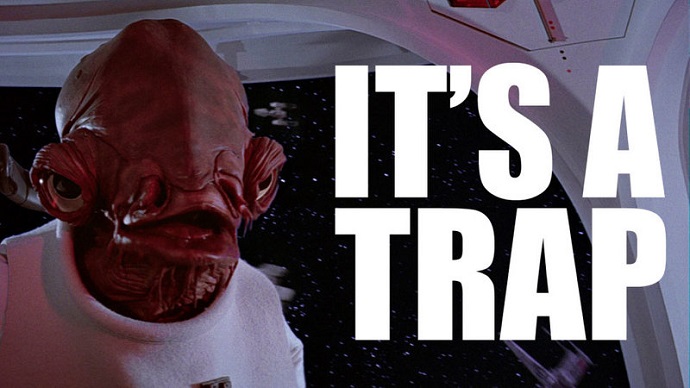
Instead I needed to sideboard into a disruptive tempo deck that protected my two-mana threats and tried to kill them before their Search for Azcantas would bury me in card advantage. This realization led me to my final list:
Creatures (19)
- 2 Torrential Gearhulk
- 4 Glint-Sleeve Siphoner
- 4 Gifted Aetherborn
- 3 The Scarab God
- 4 Champion of Wits
- 1 Hostage Taker
- 1 Ravenous Chupacabra
Lands (22)
Spells (19)
Sideboard

Creatures (19)
- 2 Torrential Gearhulk
- 4 Glint-Sleeve Siphoner
- 4 Gifted Aetherborn
- 3 The Scarab God
- 4 Champion of Wits
- 1 Hostage Taker
- 1 Ravenous Chupacabra
Lands (22)
Spells (19)
Sideboard

Unique Card Choices
The idea for playing Treasure Map in a midrange deck came from Gerry Thompson and Bryan Gottlieb’s podcast. In Episode 59, Bryan talked about a B/W Control deck that was using four copies of Treasure Map as both ramp and card advantage. His deck, unfortunately, did not contain any of the three pillars of Standard, but his logic behind the power of Treasure Map was sound, so I put three in my initial brew of U/B Midrange.
And it was insane!
Treasure Map is the linchpin of the deck. It does everything you could possibly want. It provides card selection in the early game and helps you hit your land drops. In the mid-game, it transforms and gives you a huge mana advantage. In the late-game, you can sacrifice Treasures to draw cards and bury your opponent in card advantage. If you draw it off the top in the late-game, it can also help prevent you from flooding out. This is the deck’s best weapon against midrange decks, and it’s responsible for the deck’s insane win rate against them; I didn’t lose a match to a midrange deck all weekend, and only lost one match in all of my testing.
However, be aware that playing Treasure Map comes with a few deckbuilding concessions: you cannot play as many three-drops because you want to activate Treasure Map on Turn 2 as well as play another spell. This is why my only three-drops are Champion of Wits and why I have zero copies of Supreme Will in my 75.
Champion of Wits has powerful applications against every major archetype. Against control decks, Champion of Wits does a mini-Brainstorm impression. While the front side does not give you actual card advantage, it gives you virtual card advantage by allowing you to discard dead cards like Fatal Push and extra copies of Vraska’s Contempt – against Grixis Energy, you usually want to have at least one Vraska’s Contempt to answer their copies of The Scarab God – while digging for more threats and counterspells. In addition, it provides an inherent two-for-one because you can eternalize it and keep up on card advantage in the late-game against control decks.
Against midrange decks, Champion of Wits allows you to hit your land drops or discard excess lands in the early-game and provides a body that can trade with early creatures like Merfolk Branchwalker and Jadelight Ranger. After Champion of Wits has traded off or chump-blocked in the early-game, it provides late-game inevitability with its eternalize ability. An eternalized Champion gives you a massive body that draws at least two cards and sometimes more when you discard extra lands. Other midrange decks simply don’t have this kind of late-game inevitability that Champion provides.
But Champion of Wits is truly at its best against aggressive decks. It provides an early body that allows you to dig for Vraska’s Contempt and Fatal Push while discarding Treasure Maps and extra lands. The body is just large enough to trade with almost all of a red deck’s early creatures and allows you to win the topdeck wars because, even if you’re drawing lands, you’re getting closer to eternalizing your Champion and putting the game away because of it.
All that being said, playing Champion of Wits comes with a cost. It’s by far the most difficult card in the deck to play correctly. When you cast Champion of Wits, you have to have a vision for how the game is going to develop and based on that, what cards you want to keep in your hand.
Some general guidelines (these are not hard-and-fast rules):
1. Discarding another Champion of Wits is like drawing a card, so it is usually correct to do so.
2. If you don’t think the game will last more than five or six more turns or your mana is going to be tied up over the next few turns, discard Treasure Maps.
3. Discarding an extra copy of The Scarab God can give you the ability to protect another one. If you have nine mana, you can use The Scarab God to exile the other one in graveyard. This allows you to “legend-rule” your original copy of The Scarab God to the graveyard, protecting it from a Vraska’s Contempt or Cast Out. Your opponent wastes a removal spell and you have a copy of The Scarab God on the battlefield with the original one in your hand if they ever kill the copy.
4. If you don’t need the body and have nothing you would want to discard no matter what you drew, don’t cast Champion of Wits. Save it for when you can get value out of it.
5. The maximum number of lands you really need is nine, enough to both play and activate The Scarab God. Sometimes you do want more, but in general you should hold your lands in case you draw or want to Flashback a Champion.
Throughout the weekend, my opponents were stunned by my maindeck copies of Spell Pierce. But they serve a vital role in the deck, protecting my threats and allowing me to use all of my mana. The real advantage this deck has over Grixis variants is that you have a greater ability to utilize all of your mana every single turn, since you don’t have lands that enter the battlefield tapped. Spell Pierce allows you to both deploy a threat and answer a threat like Chandra or counter a removal spell like Vraska’s Contempt. Not having to wait one extra turn to play a threat without fearing Chandra is huge.
Spell Pierce has relevant targets against every single major deck in Standard right now. But Spell Pierce is better in this deck than in Jeremey Henry’s winning decklist from SCG Philadelphia because we have Champion of Wits. In the late-game, when Spell Pierce is basically dead, you can turn it into a new card via Champion!
The other counterspells in the deck are a little more self-explanatory. You want a maindeck Negate as a surefire way to counter an Approach of the Second Sun or a Vraska’s Contempt. Since you can dig through so many cards with Champion of Wits and Treasure Map, it’s nice to have one sure way to stop a noncreature spell. Flying creatures like Glorybringer and Rekindling Phoenix are problems for the deck, so Essence Scatter gives you a way to trade up on mana with these threats. In a roundabout way, Essence Scatters act like extra copies of Vraska’s Contempt because they counter almost all the threats you want to use the powerful removal spell on, but they allow you deploy your threats at the same time due to the two-mana difference.
Sideboarding Guide
Mardu Vehicles
Out:
In:
Game 1, you have a real weakness to flying threats, so you want to point your removal at Heart of Kiran and stop it from getting over your defenses. You’re able to contain the majority of ground threats with Gifted Aetherborn and Champion of Wits, so the only cards you really care about are Scrapheap Scrounger, Heart of Kiran, and Hazoret the Fervent. The Scarab God is unbeatable if they don’t have a flying threat or a Hazoret, so unless I’m dead immediately to an Unlicensed Disintegration, I usually just jam The Scarab God because it’s a fantastic roadblock against all of their ground creatures.
After sideboarding, you want Duress as a proactive way to strip their copies of Chandra, Torch of Defiance; Ixalan’s Binding, Heart of Kiran, and Unlicensed Disintegration. They slow down after sideboarding and usually bring in bigger threats, which is actually good for you and better for Duress, as you’re the better long-game deck and they still have a hard time beating The Scarab God. You no longer want the two-mana counterspells because you need to be proactive in the matchup and too often you have the wrong counterspell for their threat and end up dying. Last, don’t keep any seven-card hand that doesn’t have a play before Turn 3, as you have to interact early and often in order to pull ahead.
Red Aggro
Out:
In:
Unlike Mardu, most aggressive red strategies don’t have access to flying threats to attack through a blockade of creatures maindeck, so don’t be afraid to take a few points of damage early to in order to develop a battlefield. Chandra and Hazoret are their only relevant threats in the matchup, so try to save your Vraska’s Contempts for them. If they have a card in hand, I usually wait until their combat step to kill Hazoret, because if they have a second one, they get to hit you for five damage. And, of course, The Scarab God is game over unless they can kill you the turn it resolves.
The pillars of the sideboard games are, unsurprisingly, Chandra and Glorybringer, and I want to avoid getting blown out by either of them. I try to focus on killing these threats and using my early removal to handle their aggressive starts. In general, this matchup is rather easy and one of the best reasons to play U/B over Grixis, as you don’t have to worry about drawing too many lands that enter the battlefield tapped and dying to their early haste creatures.
Last, when paired against the Path of Mettle decks, sideboard out all of your Glint-Sleeve Siphoners and leave in the Treasure Maps, since Siphoner dies to their namesake card.
G/B or Sultai Constrictor
Out:
In:
This is your best matchup by far, as long as you don’t die quickly to a Winding Constrictor start. Most lists don’t play Blossoming Defense anymore, so you have more flexibility with timing your removal spells without being punished. Your card advantage engines, Treasure Map and Champion of Wits, give you the power to win any long game against them. If they’re on the play and lead with Winding Constrictor and you have the choice between doing literally anything else and playing Glint-Sleeve Siphoner, do anything else, because if they cast Walking Ballista, they’ll be able to kill your Siphoner and keep the Ballista around.
After sideboarding, they get better tools against you with their own copies of Gonti, Lord of Luxury and Vraska, Relic Seeker, but the matchup is still heavily in your favor. They slow themselves down after sideboarding, so you don’t need Gifted Aetherborn as a roadblock anymore. The easiest way to lose this matchup is to allow a Glint-Sleeve Siphoner to spiral out of control unless you have a way to keep up with their card advantage.
Grixis Energy
Out:
In:
Not to make this matchup sound simple, but I’ve found that the more red threats Grixis Energy has in their deck, the easier it is to beat them, and the more copies of Glimmer of Genius and Torrential Gearhulk they have in their deck, the harder it is to beat them. The red versions cannot keep up with your card advantage engines, while Glimmers and Gearhulks give the other versions the ability to keep up with Champion of Wits and Treasure Map. Whirler Virtuoso and Glint-Sleeve Siphoner are their best cards against you, so you want to focus using your resources to trade with those threats, since both can spiral out of control against you.
After sideboarding, the matchup turns into your classic midrange slugfest. If one player does not gain a huge early advantage with an unanswered Glint-Sleeve Siphoner, the game is simply one of trading resources. Luckily, you can pull ahead in the fight because you have Champion of Wits and Treasure Map, where they generally don’t. You also get to use your mana more effectively because you have fewer lands that enter the battlefield tapped. Try to protect your threats with Spell Pierce and Negate and trade up on resources as often as possible. Gonti, Lord of Luxury is one of your best cards in the matchup because it provides both a relevant body and an additional card, two things that cannot be overlooked in a midrange slugfest.
Grixis Control
Out:
In:
Grixis Control is an extremely difficult matchup because Search for Azcanta gives them late-game inevitability and all their removal is live against us, while our copies of Fatal Push are completely dead. You don’t want the game to go long because that favors their gameplay, but unlike in most matchups, you have to be the aggressor…and your deck is not set up to do that. Try to use Treasure Map as a ramp spell to give the ability to both cast and activate The Scarab God in the same turn. Essence Scatter is one of your best cards because it can blow them out if they’re relying on a Torrential Gearhulk to stabilize or have the ability to cast and activate their own copy of The Scarab God on the same turn.
After sideboarding, you need to be the tempo deck in the matchup. Use your counterspells to protect your two-mana threats and get in lots of early damage or pump mana into Treasure Map so you can gain a mana advantage over them. I wouldn’t keep any seven-card hands that don’t have a two-mana threat and a way to protect it (Duress, Negate, and/or Spell Pierce). Last, I always try to counter Search for Azcanta because it’s their best way to gain control of the game.
Moving Forward
Moving forward, I’d look to add more copies of Hostage Taker to the maindeck because it’s better against the aggressive decks and can help to answer problematic artifacts like Silent Gravestone. I would also like to try to find room for Deadeye Trackers in the sideboard because they help both of your bad matchups, Grixis Control and U/W God-Pharaoh’s Gift.
I truly believe that U/B Midrange is powerful enough to be part of Standard’s top tier and think that it would be a fantastic choice for the Standard Classic at SCG Indianapolis later this month.
Go flip those Treasure Maps!


